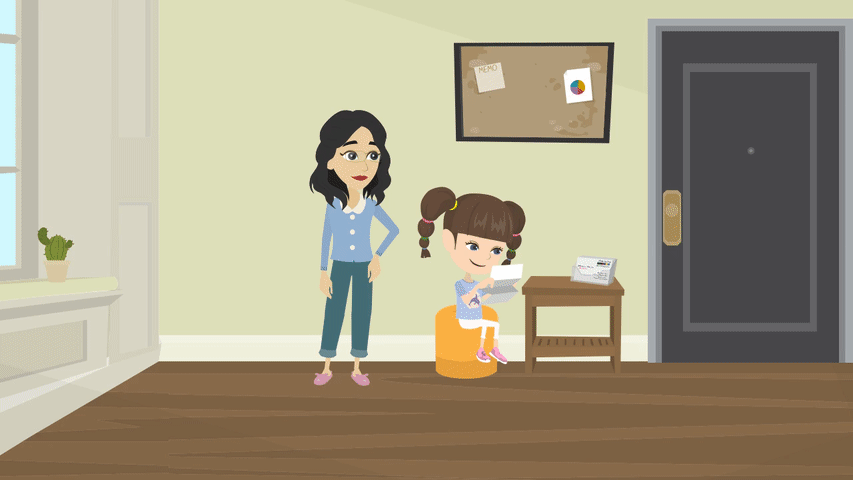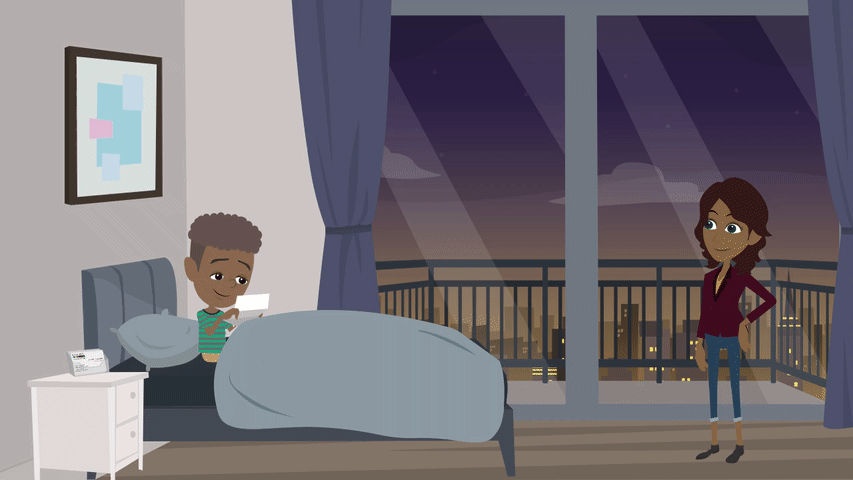Practicing your coping skills before you even feel anxious can help you when the time comes. Below are some tips to help you and your child get started with practicing these skills:
- Practice your coping skills regularly, especially if these skills are new. If possible, we recommend practicing daily so that it can become a habit.
- Pick a specific time to practice coping skills. For example, you and your child may choose to practice coping skills in the morning after breakfast or before bed. Pick a time when your child is not feeling anxious so they can learn the skill best.
- In the beginning, keep practices short and simple. Coping should not be a huge chore!
- Remember to give your child rewards for their effort. Learning a new skill can be challenging, so positive attention and rewarding effort as opposed to performance – or how “bad” or “good” they did – is important. You can keep track of this practice in the table provided with your child’s materials as well as here.
- When you notice that you child is becoming more comfortable with these skills, you can begin prompting them to use them ahead of anxiety-provoking situations or even when they are already feeling worried or anxious. The next page introduces a helpful tool to use when starting to use these skills in the moment.
We want to encourage your child to engage in one of these coping skills every day if possible over the next week.
Coping Skills Tracking Form
We have included a tracking form below. Download it to your device, fill it out electronically or print it out.
Coping Skills Cards
Remembering to use the coping skills when your child is anxious can be difficult at first, because you and your child are not used to using them. Coping skills cards can serve as reminders and help you and your child get in the habit of using the coping skills.
We have some examples that you can print here:
Each of the example cards has brief instructions of either deep breathing or 5-4-3-2-1 skills. Feel free to make your own cards with the language that your child uses. For instance, instead of ‘Breathe out like you are blowing a candle!’, you can write ‘Breathe out like you are blowing bubbles’ if your child likes bubbles more. Some children may also benefit from a card that just has an image of a candle, bubble, or pinwheel. As long as your child understands the concept of both skills, the words or images that you use do not really matter! If you and your child selected other coping tools to use, make your own cards to represent those skills.
There are several ways your child can use the coping skills cards:
- Your child can carry these cards around in their pocket and take them out whenever they feel anxious.
- Your child can keep these cards in their room (on their desk, near their toys) and come back to them whenever they feel anxious.
- Your child can place these cards where they often get scared or feel anxious. For instance, if your child always gets anxious and experiences some physical symptoms before they go to school, they can keep these cards on a bench that’s next to the door or even in your car. If your child is afraid of trying out new foods, they can keep these cards in the kitchen. The key is to have these cards close to your child in situations when they often feel anxious, so they can quickly reach these cards and use these skills.
If you believe your child needs more help in using these coping cards, you can start by keeping the cards with you and providing them to your child whenever they feel anxious. Then, gradually help your child use these cards more independently.
This is how Sally and Neil use their coping skills cards:

Since Sally feels most afraid and nervous when she is around other kids, she practices her deep breathing skills before she goes to trainings. She keeps her cards in the seating area next to the door, so she can practice with her mom right before they head out to the trainings. Sally’s mom also keeps a second set of the cards in the car in case Sally needs additional practice before she leaves the car.
Neil is afraid of the dark, so his heart starts to beat really fast when it’s time for him to go to bed. He keeps the 5-4-3-2-1 card on his nightstand, so he can use it before going to sleep. At first, Neil’s mom would come inside his room every night and help him do the exercise until he calmed down. Now, he goes to his room by himself and does 5-4-3-2-1 when he feels very scared or his heart starts to beat fast.
Coping skills cards can certainly help you to get in the habit of using coping skills. However, feel free to disregard them if you think your child responds better to your verbal directions. These cards are there to help you, not to increase your burden!









